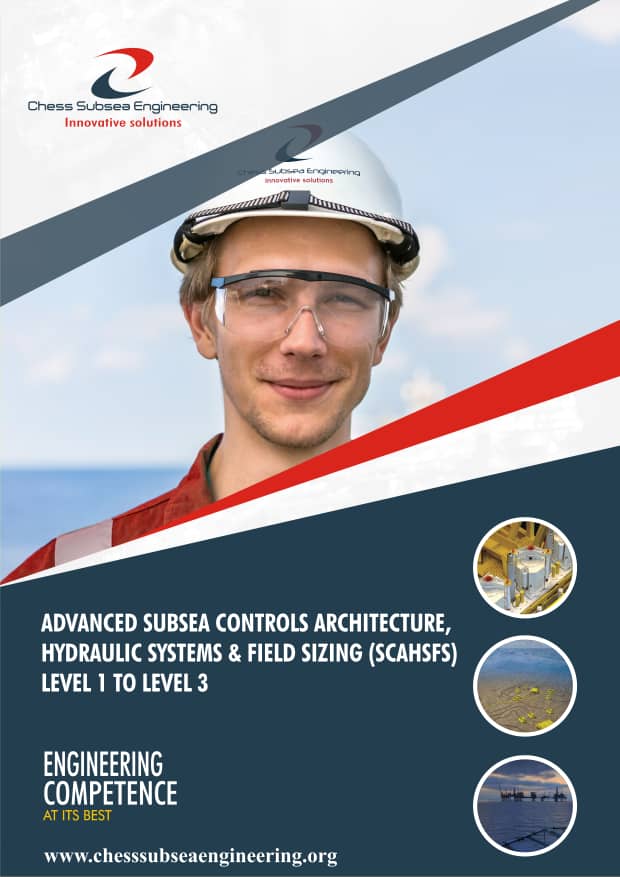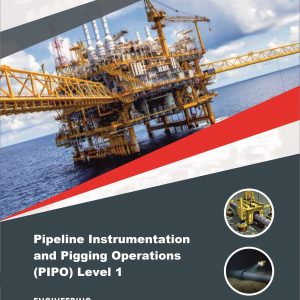Description
SCAHSFS Level 1 is an intensive training program that provides participants with a comprehensive understanding of advanced subsea controls architecture, hydraulic systems, and field sizing, covering topics such as control system design, hydraulic power units, and field sizing methodologies.
SCAHSFS Level 2 builds upon the knowledge gained in Level 1 and focuses on advanced concepts and techniques in subsea controls architecture, hydraulic systems, and field sizing, including system optimization, reliability analysis, subsea control interface, and hydraulic actuation systems.
SCAHSFS Level 3 is the highest level of the training program, offering advanced training in subsea controls architecture, hydraulic systems, and field sizing, with a focus on complex field developments, deepwater applications, system integration, and project management.
Participants will gain a deep understanding of subsea controls architecture, including the selection and integration of control components, control system design principles, control logic development, and interface with other subsea systems.
Advance Subsea Controls Architecture, Hydraulic Systems & Field Sizing (SCAHSFS) Level 1 to Level 3 covers Types of Control Systems & Evolution i.e. Direct Hydraulic Control System, Piloted Hydraulic Control System, Sequenced Hydraulic Control System, Multiplexed Electrohydraulic Control System, All-Electric Control System, Topside Equipment i.e. Master Control Station (MCS), Electrical Power Unit (EPU), Hydraulic Power Unit (HPU), Subsea Control Module Mounting Base (SCMMB), Subsea Control Module (SCM), SCM Components, SCM Control Mode Description, Valve Actuation, Choke Operation, Subsea Transducers/Sensors, Pressure Transducer (PT), Temperature Transducer (TT), Pressure/Temperature Transducer (PTT), High-Integrity Pressure Protection System (HIPPS), Subsea Production Control System (SPCS) ,Installation and Workover Control System (IWOCS) Hands On Hydraulic Sizing with a Practical Case Study, FMECA of Subsea Control System & Components and more.
Course Outline
Scope of Control Systems Engineering
Basic Control Systems
Subsea Controls Terminology
Master Control Station (MCS)
Electrical Power Unit (EPU)
Hydraulic Power Unit (HPU)
Subsea Control Module Mounting Base (SCMMB)
Subsea Control Module (SCM)
SCM Components
SCM Control Mode Description
Valve Actuation
Choke Operation
Subsea Transducers/Sensors
Pressure Transducer (PT)
Temperature Transducer (TT)
Pressure/Temperature Transducer (PTT)
High-Integrity Pressure Protection System (HIPPS)
Direct Hydraulic Control System
Piloted Hydraulic Control System
Sequenced Hydraulic Control System
Multiplexed Electrohydraulic Control System
All-Electric Control System
Subsea Control Communication Systems & Architecture
Infield Connections
Multi-Bore Connectors
Jumpers, Connectors and Penetrators
Introduction to Subsea Field Development Hydraulic Sizing
Estimation of Total Volume of Un-Compressed Fluid in the Umbilical in Liters
Estimation of Total Volume required to Open the Valve Actuators in Liters i.e. Swept Volumes
Estimation of Total volume required for Down Hole Functions in Liters
Estimation of Total Subsea Accumulation Volume in Liters
Calculate the Total Volume required at Charge-Up (System Pressurisation)
Application of ISO 13628-6 (2006) requirement for Reservoir Sizing
Subsea Control Module (SCM) Reliability Assessment with Details FMECA of Components
Outcome
By the end of the course, delegates will have an indebt understanding of subsea control systems and components, be able to recognize subsea controls architecture from field development perspective and understand how the equipment is specified, installed, used, and tested.
They will also be able to function with minimum supervision as a Subsea Control Systems Engineer for IOCs, subsea control systems company contractor, vendor or installation company.
Certificate of Completion
At the end of the course certificate of Completion Based on Scottish NVQ standard Level 4 & 5 shall be issued directly from Chess Subsea Engineering Europe.
How to Register
Click here to download registeration booklet on msword and email completed booklet to info@chesssubseaengineering.org directly.










